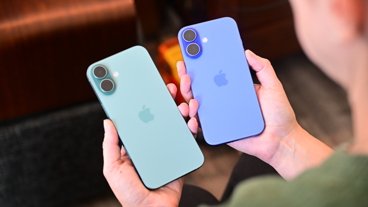Nokia on Tuesday revealed the next chapter in its comeback effort, showing off the Lumia 925: a Windows Phone that marks a shift by the company toward a new design aesthetic with lightweight components.
At a press event in London, Nokia showed off the next-gen Lumia handset the Finnish phone maker had been teasing since last month. The new Lumia sports a slimmer chassis bounded by an aluminum frame, a departure from the polycarbonate construction that marked previous Lumia devices. The 925 still features the high-grade plastic that made up the body of previous models, but it is limited to the rear cover.
The switch to aluminum allowed Nokia to shave roughly a quarter of the weight of the Lumia 920 off the new model. While reviews for the Lumia 920 praised the overall design aesthetic, many outlets complained about its nearly half-pound weight. At 139g, the 925 is considerably lighter, though it's still about 1.24 times the weight of Apple's iPhone.
Aside from the design changes, the Lumia 925 appears to be largely the same device as its 920 predecessor and other variants. Internally, it packs the same PureView optical system, though Nokia has apparently made some changes to image processing algorithms in the system. It also packs the same dual-core 1.5GHz processor and 1GB of RAM.
The 925 will debut in the European and Chinese markets in June on Vodaphone, China Mobile, and China Unicom. It will launch in the United States at a later date as a T-Mobile exclusive.
The 925 is the second high-end Lumia announced in the past four days. Last week saw the introduction of the Lumia 928, a Verizon-exclusive variant that also sports a slimmer build, but without the aluminum casing elements.
The company may not be done introducing new Lumia models either. Jo Harlow, Nokia's head of smart devices, told The Wall Street Journal that an expansion of the Lumia line is in the offing.
"Later this summer," Harlow said, "we will continue to bring innovation and new experience to our Lumia portfolio."
What exactly that means is uncertain, but rumors abound that the company is preparing to roll out a super-cameraphone, a Windows Phone 8-based successor to last year's PureView 808, which featured a 41MP camera allowing for remarkable image quality. Nokia is also said to be working on a Windows 8-based tablet, and supposed designs for such have repeatedly leaked to the Internet.
For Nokia, the new handsets represent a next step in the former mobile phone market leader's slow march back toward relevance. Supplanted by comparative newcomers such as Samsung and Apple, Nokia subsequently hitched its fortunes to Microsoft's Windows 8 platform in a "bet the company" strategy.
The results have been middling, as Microsoft's phone OS has struggled to gain traction in a market dominated by iOS and Android.
Nokia has seen a few encouraging signs of late, though, as Lumia sales have continued to edge upward. Last quarter, the company moved 5.6 million units, up from 4.4 million units for the previous quarter. The Lumia line is, to date, the most successful among any handsets running Windows Phone.
 Kevin Bostic
Kevin Bostic






-m.jpg)






 Christine McKee
Christine McKee
 Charles Martin
Charles Martin
 Mike Wuerthele
Mike Wuerthele
 Marko Zivkovic
Marko Zivkovic
 Malcolm Owen
Malcolm Owen


 William Gallagher
William Gallagher


-m.jpg)






23 Comments
So, as the battle rages on; my next question is what, or who, will drop the "big one" on, or around June 10th ? Somebody is definitely going to be doing everything they can to steal Apple's WWDC thunder.
Just in time for an iPad refresh, I would say this would probably not work with whatever new version Apple pumps out, but then again, for purely using for CC transactions, theres not reason not to use the legacy iPads anyways.
So, as the battle rages on; my next question is what, or who, will drop the "big one" on, or around June 10th ?
Somebody is definitely going to be doing everything they can to steal Apple's WWDC thunder.
Uh, history has shown it's pretty fruitless to try to "steal Apple's thunder" during an Apple event. You're pretty much shooting yourself in the face.
A bad copy of the iPhone is all I can see. Am I the only one who finds this phone seriously ugly?
So, Nokia finally uses an antenna-frame design that they once mocked (during "Antennagate") and that looks quite similar to the one Apple patented (http://appleinsider.com/articles/12/09/18/apple_granted_patent_for_iphone_4_antennagate_antenna_design), but they still keep a plastic back? Is this a design or an identity crisis?